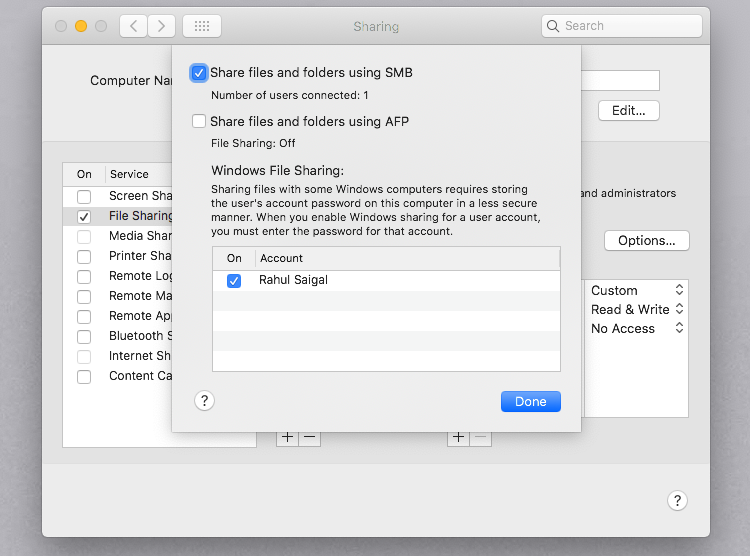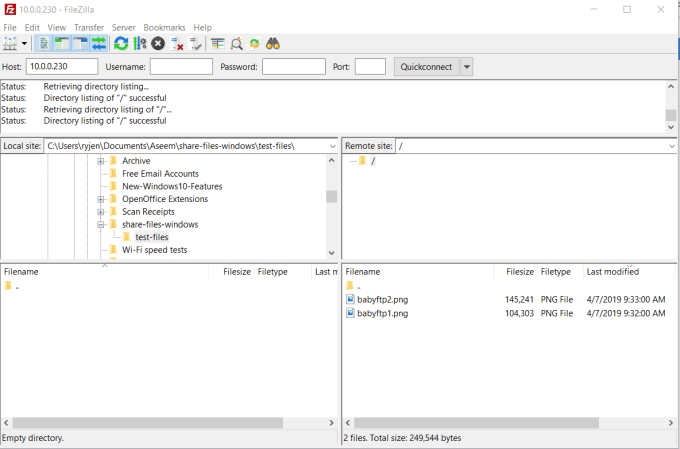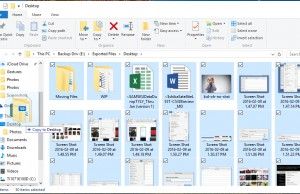
- #MOVE FILES FROM MAC TO PC OVER NETWORK HOW TO#
- #MOVE FILES FROM MAC TO PC OVER NETWORK INSTALL#
- #MOVE FILES FROM MAC TO PC OVER NETWORK FULL#
- #MOVE FILES FROM MAC TO PC OVER NETWORK SOFTWARE#
- #MOVE FILES FROM MAC TO PC OVER NETWORK PC#
Hopefully all of your essential Mac apps are also available for PC, but you're bound to find at least a couple that aren't. So searching for the app names or related keywords in your inbox can also help dig up relevant product keys and other details. Smaller developers usually at least email your licensing information when you purchase an app. For example, if you're an Adobe Photoshop Creative Cloud subscriber, you may be able to simply log in to your Adobe account and download your apps, depending on your subscription type.
#MOVE FILES FROM MAC TO PC OVER NETWORK SOFTWARE#
Most large developers make it fairly simple to log in to their sites and access active license info and software keys. If your essential apps are paid or premium apps, you may need to dig up your software licenses. As long as you have access to those services, a speedy transition from Mac to Windows will be possible, even if it's at times a little painful. Whatever the app, it's a good idea to be proactive and make a quick list of the software that you absolutely need. Perhaps it's your Twitter client of choice. Maybe your organization uses Outlook or Slack for communication, and you can't work without one or both of those apps. If you're a recovering Mac user, iTunes may still have its hooks in you. Identify essential apps and find replacements if necessaryĮverybody has a few apps (or more) that they just can't live without. However, some of the other stuff, the fun-but-not-necessarily-essential software, can wait. You'll need some apps and services immediately, whether they're for work or play, productivity or entertainment.
#MOVE FILES FROM MAC TO PC OVER NETWORK PC#
That's a recipe for disaster, and Windows and Mac are different enough that if you try to master your new PC in the first 24 hours, you may quickly become overwhelmed. However, you should not try to do too much, too soon. Yes, you should go cold turkey and only use your new PC after you first make your switch.
#MOVE FILES FROM MAC TO PC OVER NETWORK INSTALL#
In the meantime, if you're still trying to figure out which PC you want to get, go ahead and install Windows 10 on your Mac - make that MacBook Pro truly Pro. You already made your decision to switch, right? The most effective way to transition from Mac to PC is to dive right in wholeheartedly. Hide your Mac under your bed or in a closet if you must. We suggest going completely, 100 percent cold turkey with your new PC ASAP.


#MOVE FILES FROM MAC TO PC OVER NETWORK HOW TO#
The quicker you resolve any issues, or figure out how to get past some sticking point on PC that's different than on a Mac, the faster you'll get up to speed with Windows. Chances are you still have your old Mac, and when you come across some "challenge" with your new PC, you might be tempted to try to circumvent it and just pop back onto the old Apple computer to get the job done. This tip is easier said than done, but it's also perhaps the most important advice on this list. Go cold turkey and quit that Mac completely It's a good idea to spend some time poking around these services to determine which ones are valuable to you.

For example, if you use Skype, you can use your Skype credentials to log in to your Microsoft account. But did you know your Microsoft account gives you access to a bunch of additional Microsoft services, including Skype, OneDrive, Xbox Live, the Windows Store and MSN services? If you already use any of these Microsoft services, or have in the past, you likely already have a Microsoft account.
#MOVE FILES FROM MAC TO PC OVER NETWORK FULL#
The internal drives on the Windows machine still test at their full speed.If you already setup your PC, you probably already created an account. I cannot for the life of me fathom what has changed, everything is still enabled on the windows side, and crucially this is only for externally mounted drives. However, I have connected again a couple of weeks later and the network speeds have dropped back down to 5-6MB/s. I ran across this page and when I enabled NetBIOS over TCP/IP this seemed to fix the issue - external drives mounted on the Win side would test at their capacity of 320MB/s when testing from the MBP.

However, external drives did not work - I was getting write speeds of around 5MB/s They connected up nice and easily, and when running a test of disk speed from the MBP (with Blackmagic disk speed test) the internal drives on the Win machine tested at their full speed for around 500MB/s. I was trying out a direct connection between my MBP and consumer Win10 machine connected direct via thunderbolt.


 0 kommentar(er)
0 kommentar(er)
